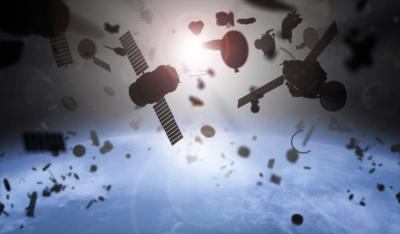Fri, Nov 26, 2021
“A Workable Strategy” for Eliminating Space Debris
An Embry-Riddle Aeronautical University professor and his co-inventors patented a workable, functional solution to the prevention of spaceborne debris accumulation. Named the Drag De-Orbit Device, or D3, the system is designed to guide small satellites out of Earth orbit into the atmosphere where they burn up in re-entry. The increased usage of private and commercial satellites, even smaller ones for cheap research experiments, presents an ongoing risk for all

orbital equipment. High-speed space flotsam can function similar to buckshot circling the globe, blocking off orbital stations or tracks from future use.
The inventor, Dr. Riccardo Bevilacqua, a professor of Aerospace Engineering at the university, saying “The D3 helps solve the problem of space debris by safely steering the atmospheric re-entry and demise of low-Earth orbit spacecraft.” His work piqued the interest of Orbotic Systems, a space debris specialist, and led to their licensing of his tech. “We are confident we will see the D3 attracting the attention of the private sector, given future plans on injecting thousands of small spacecraft into low orbits — for Earth observation, providing global internet and much more,” he said. “I would expect things to ramp up in the next five years or less.”

The D3 is a 10 by 10 by 5 centimeter system that mounts on the back of a satellite to connect with its flight control system. Using independently deployable and retractable booms, it can adjust its incoming trajectory while returning to earth, skimming the atmosphere so it can create a de-orbit track away from populated areas. It can double as a collision avoidance maneuvering system while in space, a bonus for satellite designers hoping for more control over their systems even after their deployment.
Bevilacqua and graduate student Nicolo Woodward will begin the integration of new electronics into the system in preparation for test flights beginning in late spring 2022.
More News
From 2023 (YouTube Version): Legacy of a Titan Robert (Bob) Anderson Hoover was a fighter pilot, test pilot, flight instructor, and air show superstar. More so, Bob Hoover was an i>[...]
Get The Latest in Aviation News NOW on Instagram Are you on Instagram yet? It's been around for a few years, quietly picking up traction mostly thanks to everybody's new obsession >[...]
Aero Linx: B-52H Stratofortress The B-52H Stratofortress is a long-range, heavy bomber that can perform a variety of missions. The bomber is capable of flying at high subsonic spee>[...]
Altimeter Setting The barometric pressure reading used to adjust a pressure altimeter for variations in existing atmospheric pressure or to the standard altimeter setting (29.92).>[...]
"Knowing that we play an active part in bettering people's lives is extremely rewarding. My team and I are very thankful for the opportunity to be here and to help in any way we ca>[...]
 Classic Aero-TV: Remembering Bob Hoover
Classic Aero-TV: Remembering Bob Hoover ANN FAQ: Follow Us On Instagram!
ANN FAQ: Follow Us On Instagram! ANN's Daily Aero-Linx (05.15.24)
ANN's Daily Aero-Linx (05.15.24) ANN's Daily Aero-Term (05.15.24):Altimeter Setting
ANN's Daily Aero-Term (05.15.24):Altimeter Setting Aero-News: Quote of the Day (05.16.24)
Aero-News: Quote of the Day (05.16.24)




